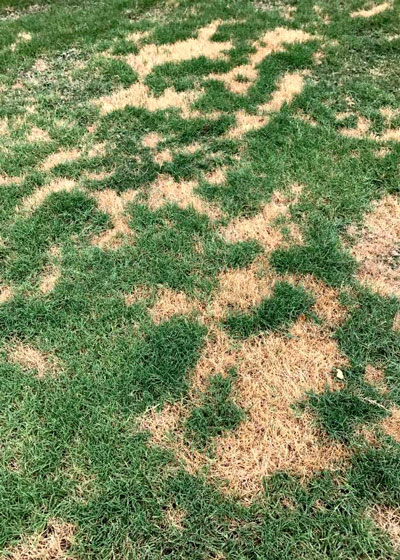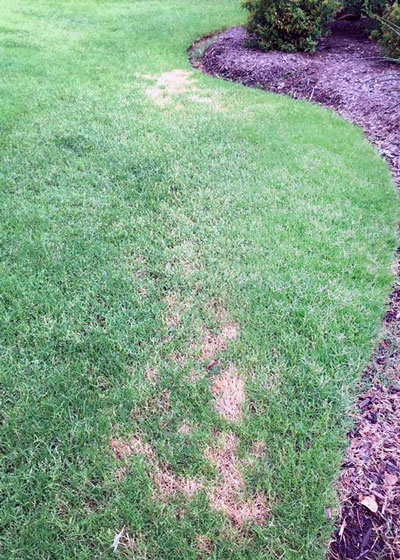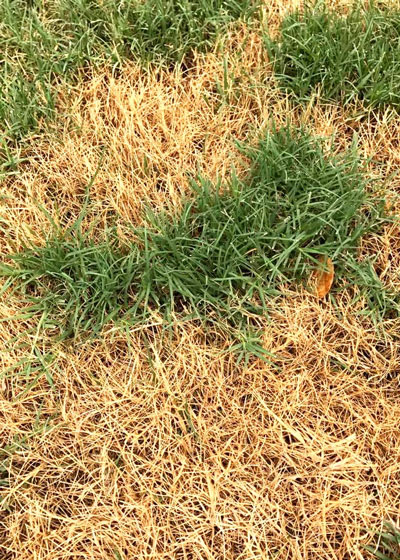Question of the Week: June 29, 2017

Photo: Serious outbreak of Pythium (cottony blight) brings really unusual patterns to impacted bermuda turf in South Texas this past weekend.
“Neil, what is happening to my bermuda lawn, and how can I stop it?”
We think of bermudagrass as being almost bulletproof, but even it has insect and disease problems. This is one that shows up in the summer, and I’m already getting phone calls, letters and posts on my Facebook page asking about it.
It’s a fungal disease known variously as Pythium blight, cottony blight and greasy spot. In truth, it is a type of Pythium (Pythium aphanidermatum), but I’ve always called it cottony blight since I first saw it in fall, 1970.
Back then I was working in the Records Building as Dallas County Extension Horticulturist. My office was on the 6th floor, and I overlooked the plaza with the old log cabin in Downtown Dallas. I came in one Monday morning, and it looked like someone had tossed balloons of scalding hot water out of my window onto the hybrid bermuda below. The grass was completely browned in irregular circles and patches. It wasn’t long until the Park Department called. By then I’d talked to my friend plant pathologist Dr. Norman McCoy for a diagnosis, so I sounded like the smartest guy in town. In reality, one hour earlier I hadn’t known any more than an average guy walking down Elm Street.

Photo: This view of cottony blight just as it’s getting started in the Metroplex last weekend shows how it follows drainage patterns. There probably is an irrigation pipeline here with the resulting shallow depression.
It seems like this disease has become much more common in recent years. Maybe I’m just noticing it more, or perhaps it’s because bermuda is now being grown wall to wall. Whatever the reason, cottony blight is a frequent visitor to Texas lawns. The photos I’m using to illustrate this story have been posted on my Facebook page from yards in both South and North Texas within the last six days.

Photo: Closeup shows dramatic difference between impacted turf and that which has escaped.
Coping with cottony blight…
This fungus is most prevalent in yards that are kept overly wet and where the turf is maintained at high levels of nutrition (over-fed, if you will). Do not water in late afternoons/evenings or overnight. Be sure the soil drains well, and check it to be certain it’s dry before you water again. Encourage deep root growth by letting the ground dry out a bit between waterings. If you have accumulations of thatch, use a mechanical aerator to improve penetration of air into the root zone. Fungicides will offer very limited help. Improved drainage and lowered nutrients will be your best allies.
Here is Texas A&M information on this disease:
http://plantdiseasehandbook.tamu.edu/landscaping/lawn-turf/sorted-by-names-of-diseases/pythium-blight-cottony-blight-greasy-spot/
